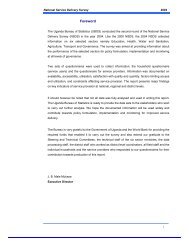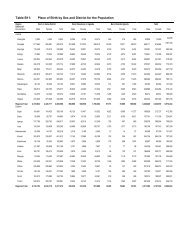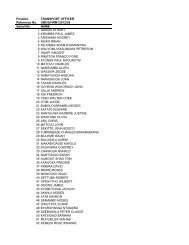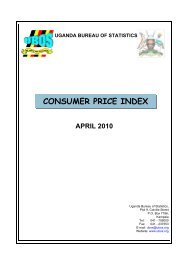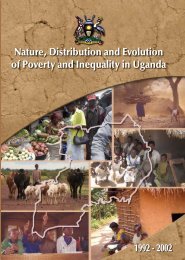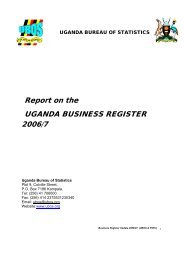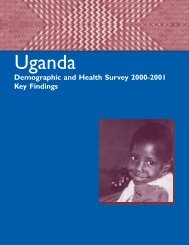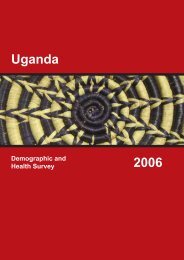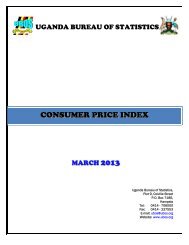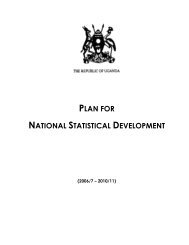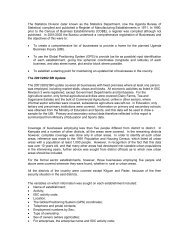Census Analytical Report - Uganda Bureau of Statistics
Census Analytical Report - Uganda Bureau of Statistics
Census Analytical Report - Uganda Bureau of Statistics
You also want an ePaper? Increase the reach of your titles
YUMPU automatically turns print PDFs into web optimized ePapers that Google loves.
<strong>Analytical</strong> <strong>Report</strong>The economy <strong>of</strong> <strong>Uganda</strong> is primarily based on the agricultural sector, with over 70percent <strong>of</strong> the working population being employed by the sector. Agricultural exportsaccount for over 45 percent <strong>of</strong> the total export earnings with c<strong>of</strong>fee, tobacco and fishcontinuing to be the main export commodities that bring in foreign exchange.In the last 5 years, the telecommunication sector has been the fastest growing sector<strong>of</strong> the economy, and this is due to the expansion programs and increase in coverageby the major telecommunication companies in the country which have led to increasednumbers <strong>of</strong> subscribers and providers <strong>of</strong> the services.1.2 Sources <strong>of</strong> DataThe main data sources for establishing benchmarks for economic and socialindicators for <strong>Uganda</strong> are censuses and surveys. Information is also obtained fromadministrative records.1.2.1 The Earlier Population EstimatesPrior to 1900, there was limited information on <strong>Uganda</strong>’s population. The first <strong>of</strong>ficialpopulation estimates <strong>of</strong> the <strong>Uganda</strong> Protectorate were made in 1900 and 1901, andgave a population at 2 million and 2.5 million respectively which were more or lessaccepted until the first census was carried out in the year 1911.1.2.2 The Population <strong>Census</strong>es 1911 - 1991The population censuses in <strong>Uganda</strong> have been conducted in the years 1911, 1921,1931, 1948, 1959, 1969, 1980, 1991 and 2002. The 1911, 1921 and 1931 populationcensuses were mainly administrative in nature, and for all the three censuses,separate enumeration procedures were made for the African and non-Africanpopulation in the country. For the non-African population and for the Africans living onnon-African premises, census forms were collected from their local administrativecentres. The population census results <strong>of</strong> 1911, 1921 and 1931 were 2.5 million, 2.9million and 3.5 million respectively.The 1948 Population <strong>Census</strong> was the first scientific census to be carried out in <strong>Uganda</strong>.This was followed by the 1959 <strong>Census</strong>es. During the two censuses, the AfricanPopulation and the non African population were enumerated separately. The twocensuses were followed by sample censuses <strong>of</strong> 10 percent and 5 percent respectively.The sample censuses were intended to provide detailed data to help in the planningprocesses.5



